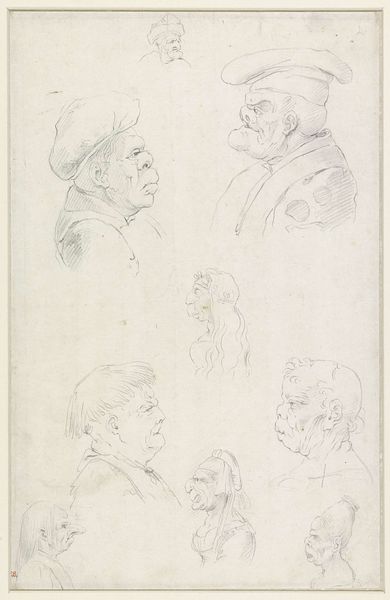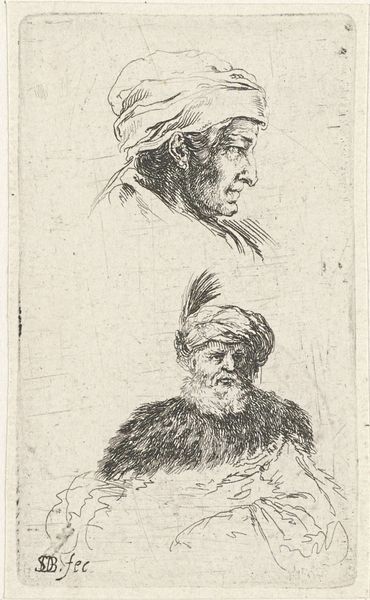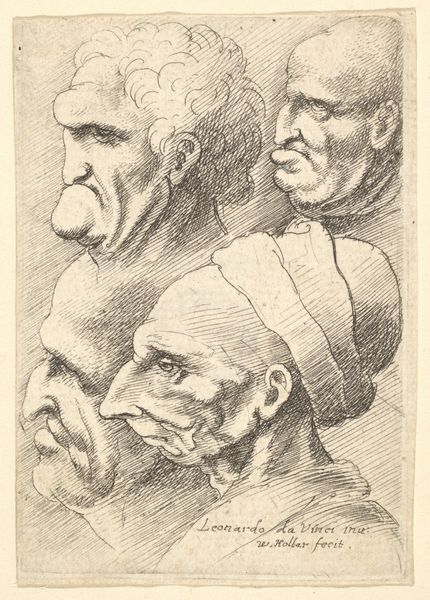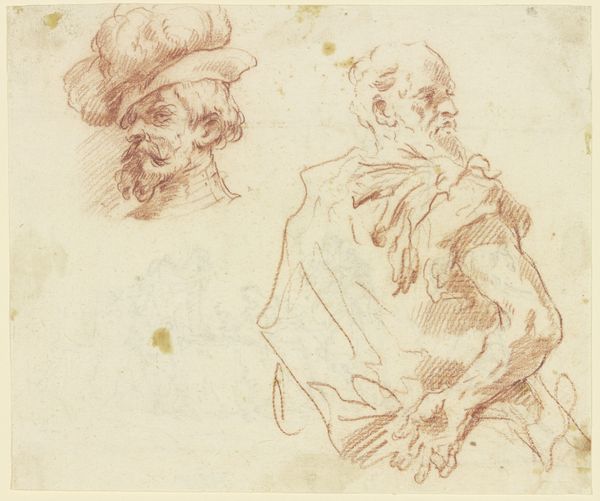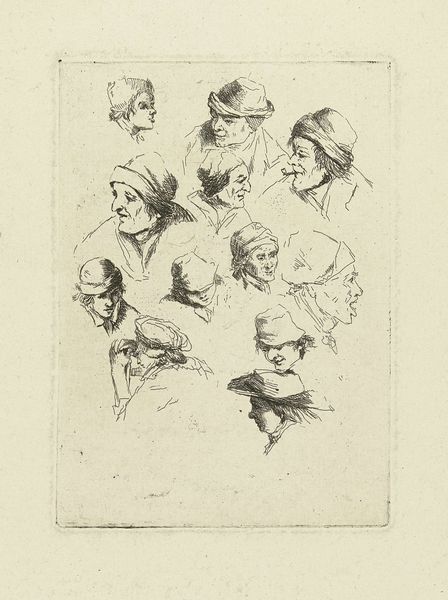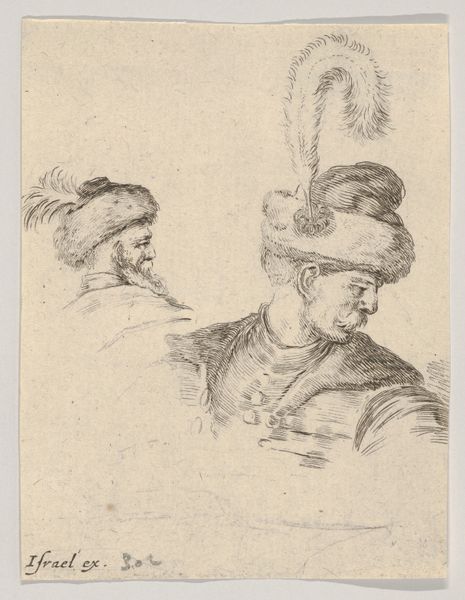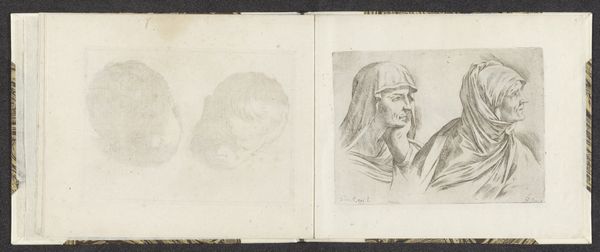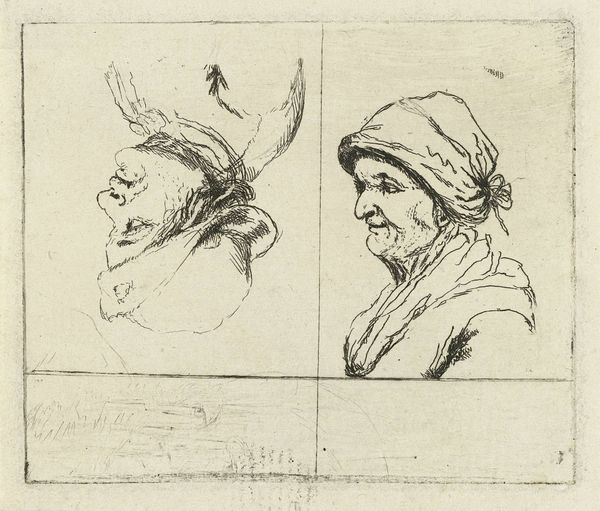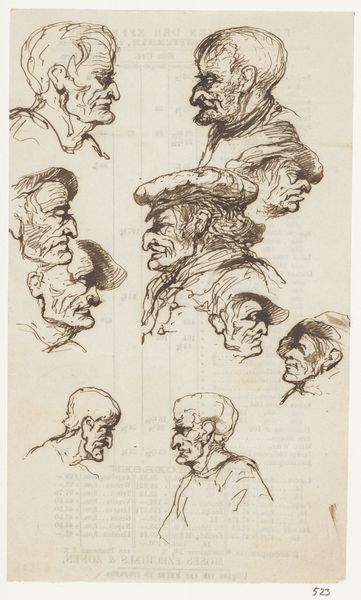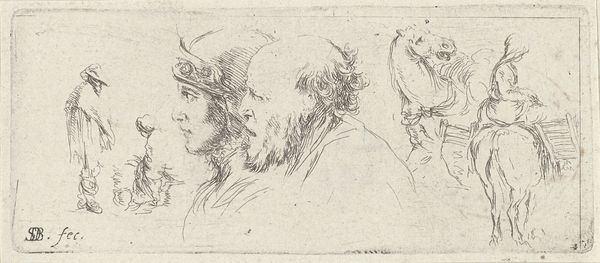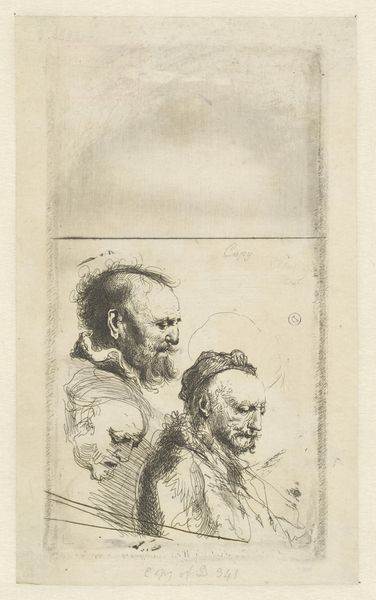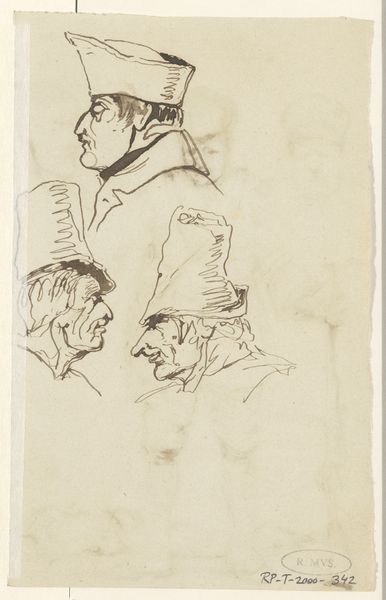
Plate 8: four small heads, a soldier at upper left, a Turk with a turban and beard at upper right, a bearded man in profile at bottom left, a young woman in profile at bottom right, from 'The Book for Learning to Draw' (Livre pour apprendre à dessiner) 1647 - 1652
0:00
0:00
drawing, print, etching
#
portrait
#
drawing
#
baroque
# print
#
etching
#
mannerism
#
history-painting
#
academic-art
Dimensions: Sheet: 3 3/8 x 2 7/16 in. (8.5 x 6.2 cm)
Copyright: Public Domain
Curator: Stefano della Bella created this etching, “Plate 8: four small heads…” sometime between 1647 and 1652. It is from his 'Book for Learning to Draw’ and is currently held at the Metropolitan Museum of Art. Editor: What strikes me immediately is the contrasting profiles. A soldier and a Turk, a bearded elder and a young woman. They feel emblematic, almost like characters in a morality play. Curator: Indeed. Della Bella lived during a period of intense social and political change in Europe. The presence of the soldier, especially, alludes to the omnipresent atmosphere of war and its impact on society. Editor: The "Turk," as they labeled him, intrigues me. Turbans held deep cultural significance, immediately denoting identity, status, and often, religious affiliation. It's more than just a portrait; it's an encounter with an "other." Curator: Right, it reveals how Europeans perceived and categorized different cultures. Prints like this played a crucial role in disseminating knowledge and reinforcing stereotypes. Note the distinct stylistic rendering for each figure—the crosshatching delineating the soldier's helmet is distinct from the looser lines of the Turk's turban. Editor: I am drawn to the gazes. Each head is carefully positioned. The bearded elder at the bottom seems to look upwards towards the heavens. It’s a direction we typically associate with religious contemplation. Is that intentional, I wonder? Curator: Possibly. Della Bella's prints were widely used as models for artists. This image, and indeed the whole book, could have served as a kind of visual vocabulary, providing examples of different expressions and human “types” for painters and sculptors. The composition emphasizes the universality of human emotion regardless of societal roles. Editor: So, the "Book for Learning to Draw" becomes more than just a manual—it's a snapshot of cultural attitudes and the politics of representation. It reminds us that even instructional art is never truly neutral. Curator: Precisely. Viewing art through the lens of history offers us the chance to appreciate it not just for aesthetic value, but also as a potent historical document. Editor: And deciphering the visual language offers keys to understanding how different cultures are categorized and valued. There’s more than initially meets the eye here.
Comments
No comments
Be the first to comment and join the conversation on the ultimate creative platform.
